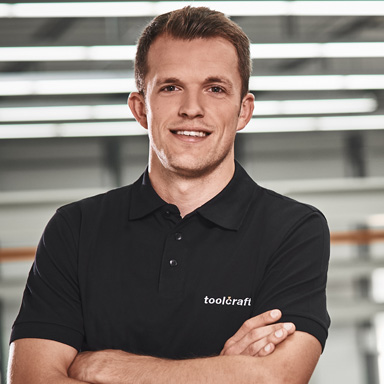One of the challenges facing Deutsche Bahn (DB), Germany's national railway company, is the need to improve the quality and competitiveness of its integrated rail network. DB is even looking to the future when it comes to its spare parts. It uses 3D metal printing to produce a component found in an alternator responsible for turning steam into electricity. The "Lima" is a standard actuator for steam locomotives and is found in virtually every series that is still in operation. The overhauled component comprises nine individual turbine blades that form a single turbine blade segment. In turn, each complete turbine wheel is made up of ten segments. A detachable joining system means that individual segments can be replaced quickly and easily. To help it produce these components, Deutsche Bahn turned to toolcraft and its comprehensive additive process chain, which takes care of everything from design, simulation and production to the reworking of machined parts and optical, tactile and non-destructive testing.
Customer:
Deutsche Bahn
www.deutschebahn.com
the starting point:
Expensive, time-consuming process
Turbine blades are subjected to considerable wear and tear. However, replacing individual blades has proven to be expensive and time-consuming to date. The construction of the welded assembly conventionally found in turbine wheels posed numerous challenges. Previously, this involved attaching 90 turbine blades into a slot surrounding the base of the blades. To fix them in place, these were riveted using an outer ring and, in some cases, a shrunk-on clamping ring was even used. This meant that it was only possible to replace individual components by taking apart the entire assembly. Swapping individual worn blades was therefore also extremely costly and time-consuming.
The challenge:
New and improved
The task was to reduce the assembly time and costs by improving the components' design. The project's main aims included finding a way to easily detach the turbine segments, ensuring a turbine output of 500 W and creating a design that could withstand the high dynamic load of 3,750 rotations per minute. The ambient temperature of approximately 220°C, the hot, humid atmosphere (caused by the steam) and the surface roughness of Ra= 3.2 µm also had to be taken into account. The strength properties of the material used as well as its resistance to corrosion and temperature had to be the same as or better than the material being used to date. Another problem to overcome were the low tolerances at the connection point with the base. To prevent the structure from becoming unbalanced, it also had to be rotationally symmetrical. A final challenge was the need to reduce costs.
the approach:
All objectives met
- Taking care of the entire additive process chain – design/simulation, 3D printing, reworking of machined parts, quality control (optical, tactile and non-destructive testing)
- Choice of material: Inconel® 625
- Redesign and flow-optimised design of the turbine blade segments with as few support structures and as little need for reworking as possible
- Additional improvements to the assembly, including the wheel, and redesign of the joining system
- Blade wheel made up of just 1 piece (cast part), meaning it has tight tolerances and the segments are challenging to rework
- Development of recommendations for action for future models
The results:
Full steam ahead into a new era
The initial tests of the new model have revealed an improvement in the steam generator's performance.
Thanks to the segmented design and optimised blade profile, output has increased from 500 W to 560 W. The project was also within budget. Follow-up projects will involve reassessing the joining system and developing a new approach that enables the blade wheel to be replaced in addition to the segments. The new wheel should be produced from solid materials using turning/milling techniques in order to generate additional cost savings compared to the cost of the conventional welded assembly.






